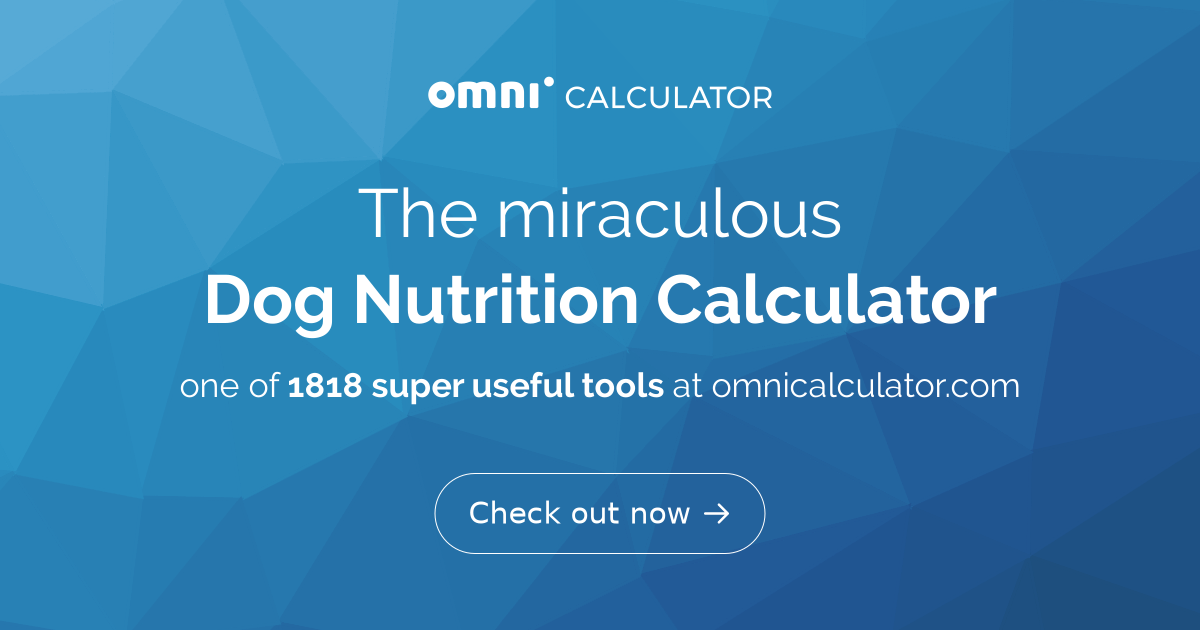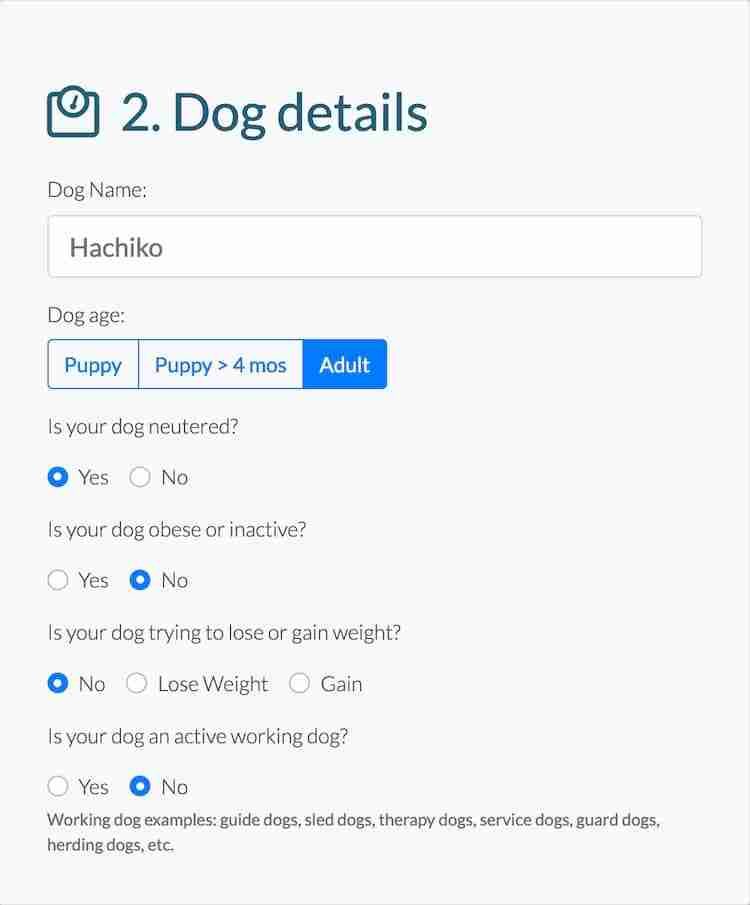

The last step is multiple 70 x 11.2, which equals 784. 75 power and you get 11.2 (rounded to the nearest tenth).

If your dog weighs 53 pounds, that converts to 24 kg. In equation form this looks like this: 70(body weight in kg. To find your dog's RER, you'll need to multiply his body weight in kilograms raised to the 3/4 power by 70. RER is the energy that your pooch needs to perform essential bodily functions like heart functions, brain functions, digestion, and respiration. This is the amount of energy (also called calories) that your dog's body burns in a typical day.īefore you can find the DER, you'll need to find Fido's Resting Energy Requirement (RER). The first thing you'll need to do when following a homemade dog food recipe calculator is to figure out your pet's Daily Energy Requirements (DER). It's also important to use this homemade dog food recipe calculator as a guideline for figuring out how much food to feed Fido at each serving. In short, it's crucial that you discuss a switch in your dog's nutrition with your veterinarian. Ultimately, nutrient deficiency can lead to death if it's not corrected. If you don't realize your dog isn't getting the proper nutrients, he may become weak and his organs could start to fail. On the other hand, if you're not feeding your dog enough, he could become nutrient deficient quite quickly. The consequences of feeding your dog too much food are obvious. He'll become obese, which could lead to a slew of other health conditions like diabetes, joint problems, certain types of cancer, and heart and respiratory issues.ĭid you know that feeding your dog too much food can also lead to nutrient toxicity? In the case of nutrition, too much of a good thing could be very bad! For example, Vitamin A toxicity can cause bone spurs, lethargy, constipation, stiffness, and limping. If he's losing weight, increase the serving size. If the dog is gaining weight, lessen the serving size.

That's why it is important to use a homemade dog food calculator. I've also heard pet owners share misinformation about watching a dog's weight and adjusting the serving sizes accordingly. This means that your dog won't need as much to get the same nutritional benefits. Homemade dog food is more nutritionally dense than most commercial foods. Many pet owners believe that they can feed their dog the same quantity of homemade food as recommended by their old commercial kibble brand. But, this homemade dog food recipe calculator will make the process a little easier. Yes, creating recipes to meet your dog's nutritional needs can be a challenge. Whenever pet owners broach this subject with me, they often bring up how difficult a homemade dog food calculator can be. We recommend a structured daily exercise and nutritional program for both you and your pet.Providing fresh, homemade food for your dog is one of the best things that you can do for his health and well-being and you can do it using a homemade dog food calculator. Note that most indoor cats receive very little sustained activity and many dogs do not receive adequate daily physical activity. Your pet will likely be fed fewer calories if you are attempting to reduce weight and improve fitness. The caloric needs of a particular pet may differ depending on such factors as lifestyle, genetics, activity level and medical conditions. *Please note that the calorie counts provided are guidelines for average lightly active adult spayed or neutered dogs or cats (1 to 7 years old receiving less than 30 minutes aerobic activity per day). We strongly advise pet owners not to reduce feeding below RER calories unless under direct supervision by their veterinary healthcare provider.Īpproximate Daily Caloric Needs for Average Indoor Pets Cats In cases that fail to respond to this number of calories, the total will need to be reduced by your veterinarian. Or (ideal or target weight in kg) to the 3⁄4 power) x 70įor weight loss in dogs and cats, feeding the RER calories for the step-weight loss target weight (or ideal weight in some cases) should be adequate. RER in kcal/day = (ideal or target weight in kg ^ 0.75) x 70 Ideal weight in pounds divided by 2.2 gives you weight in kilograms (kg)Ĭalculate the Resting Energy Requirements (RER) based on this ideal weight:

A basic formula for weight loss in pets is: General guidelines for safe weight loss in dogs are 3-5% body weight loss per month and about 0.5 pounds per month in cats (1-3% body weight). Based on your pet’s degree of excess weight, you may choose a target weight higher than the ideal weight to start. You’ll first need to have your pet examined by your veterinarian and an ideal weight calculated. Calculating the calories your dog or cat needs to be fed


 0 kommentar(er)
0 kommentar(er)
